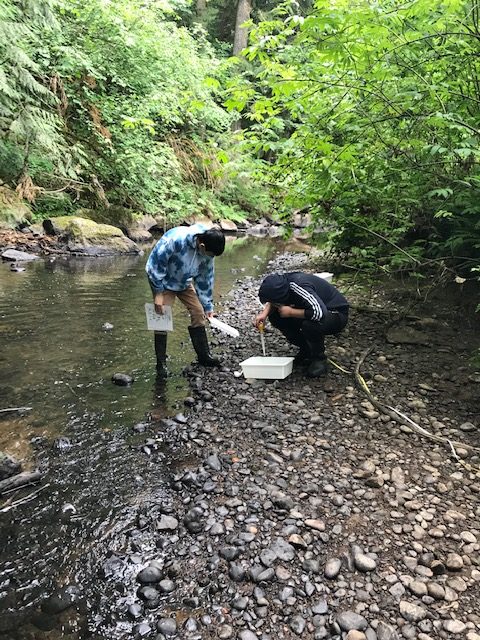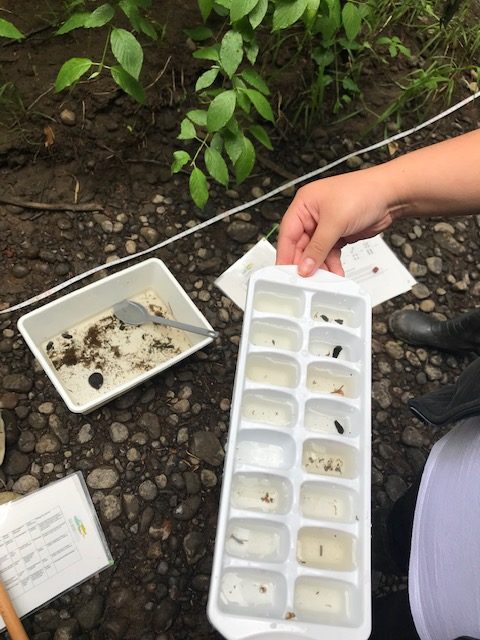When restoration projects happen, there are many ways to judge whether or not they’ve been successful: Did what was built match the design? Is a fish passage barrier resolved? Are new plantings growing well? Ultimately, though, what matters is the response of the biological community to the work; tracking that response over time can help us learn what makes a “good” restoration project, and what things we can do better on future efforts.
In 2019, the Clackamas Partnership–a consortium of local watershed councils and government and tribal agencies–was awarded a multi-million dollar grant from the Oregon Watershed Enhancement Board (OWEB), intended to fund a suite of restoration projects for the benefit of the Clackamas populations of salmon species in the lower Columbia River Evolutionarily Significant Unit. Over the next six years, projects in the Johnson Creek, Clackamas River, and Abernethy Creek watersheds, as well as on the mainstem Willamette, will add large wood to streams, remove passage barriers, open up side-channel habitat, and otherwise improve conditions for these fish populations.
In order to assess these projects, OWEB also provided funding for pre- and post-project efforts to sample benthic macroinvertebrates–the fascinating and diverse larval insects one can find living on and under rocks in a streambed. The assemblage of these insects–who’s there and who’s not–can provide valuable information about water quality and stream habitat. Johnson Creek Watershed Council (JCWC) is playing the lead role in collecting this information, which began last summer with pre-project sampling at 12 project sites (and associated reference sites). Analysis of these data by CASM Environmental showed a range of habitat quality at the sites; the vast majority of sites skewed toward sediment-tolerant species, with low numbers of sensitive species like stoneflies. Several of these projects were completed last year, including two in the Johnson Creek watershed; we will sample these again this summer, and annually through 2025, to see what impact this work has on these insect communities.
This summer, we will also be sampling at over a dozen future project sites, including a potential large wood installation at Leach Botanical Garden on Johnson Creek. Here, in addition to sampling by JCWC staff, student interns from Lents Youth Initiative (LYI) have gotten in on the bug-hunting fun, building science skills and knowledge while contributing to our understanding of macroinvertebrates in this reach of the creek.


